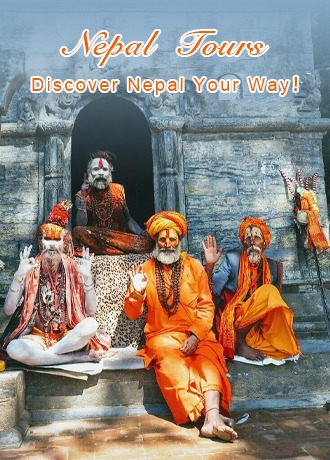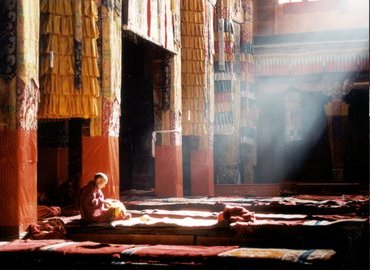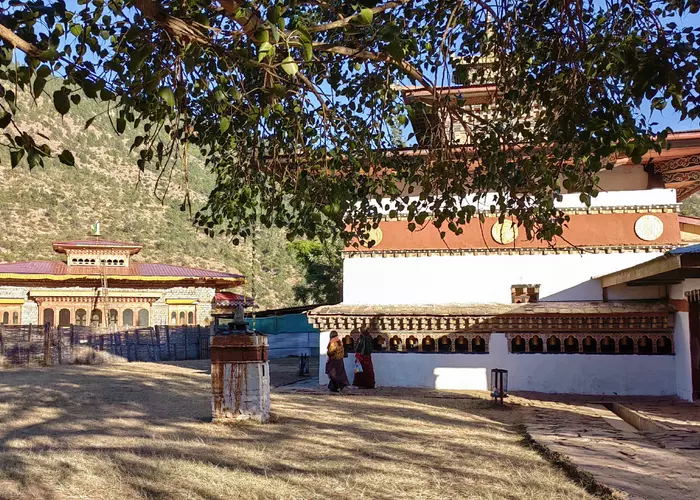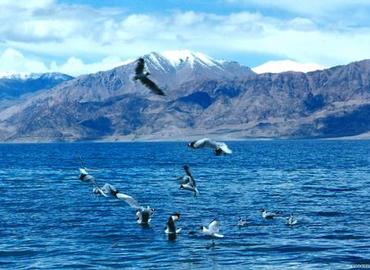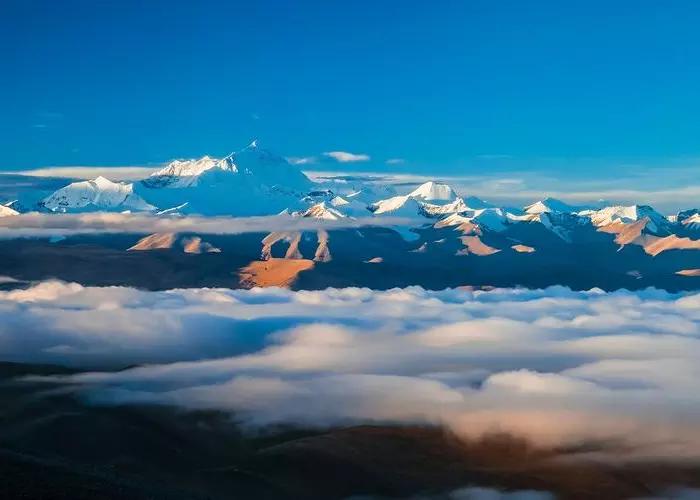Top 10 Famous Temples of Nepal
- Catherine
- Last Updated : 06/29/2023
Nepal is a country with pious religious beliefs. Religious sacrificial activities are an integral part of Nepalese daily life. Religious buildings as carriers of sacrificial activities are scattered everywhere in Nepal. There's a population of more than 26 million people, yet more than 33 million gods are enshrined here. Just in Kathmandu alone, there are more than 2,700 temples, with more than 250 temples in the downtown area of less than 7 square kilometers. For that reason, Kathmandu is called "the city of temples" by the world.
In Nepal, from the foot of the Himalayas in the north to the Terai Plain in the south, temples can be seen almost everywhere. You should know that Nepal is a religious country dominated by Hinduism. In the Kathmandu Valley in central Nepal where tourists are concentrated, especially in Durbar Squares of Kathmandu, Patan and Bhadgaon, most of the religious buildings belong to Hinduism. In the mountains of northern Nepal, due to the influence of Tibetan Buddhism in Tibet, there are more Buddhist temples, especially stupas. The eastern and western mountainous areas are dominated by Hindu temples. In the south, the areas on Terai Plain near India are still dominated by Hindu architecture. However, Lumbini, the birthplace of the Buddha Shakyamuni, is a gathering place of many temples and pagodas. It's a place where Buddhists all over the world desire to worship. So Nepal, known as the country of the gods, the most impressive thing is not only the people's simple smiles but also the ancient temples. Accompanied by sunlight and breeze, you may feel in a moment that life can really be so good.
Below are the most worth visiting temples of Nepal:
1. Swayambhunath Temple - Monkey's Paradise
This Nepalese temple is built on the top of a hill in the west of Kathmandu. Because there are many monkeys living here all year round, travelers prefer to call it "Monkey Temple". It's one of the oldest Buddhist temples in the world, with a history of more than 2500 years. According to legend, Sakyamuni once visited this place so it's one of the oldest Buddhist holy sites in Asia. The main building of the Buddhist temple is a huge stupa with a square base. The monkey temple is also called the Four-Eyed holy Temple because there are eye patterns that symbolize the wisdom of the Buddha on all sides, implying the boundless power of the Buddha's eyes. And four eyes can see every corner of Kathmandu, so it is a very suitable place to see the panoramic view of Kathmandu.
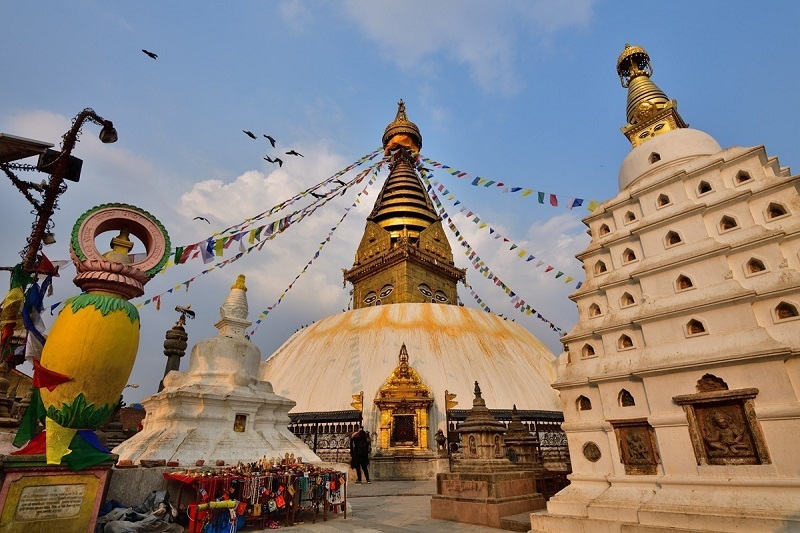
2. Pashupatinath Temple - UNESCO World Heritage
Listed in the "UNESCO World Heritage", Pashupatinath Temple, five kilometers away from Kathmandu, is one of the most important temples in Hinduism. "Pashu" means "all beings" and "patinath" means "lord". It was built in the 5th century and dedicated to Lord Shiva, the god of destruction. It's one of the four largest temples dedicated to Shiva the Indian subcontinent. For 1500 years, endless believers have come to this Nepali temple to worship.
Pashupatinath Temple has a three-story roof and some buildings painted in yellow and white around it. The reason why tourists from all over the world are interested in it is mostly because of the cremation scenes of Hindus. Only Hindus are allowed to enter here. Most tourists stand on the bridge or sit on the opposite bank to watch. During the cremation ceremony, tourists are not forbidden to take photos. However, even if you see across the bank, the shock is self-evident.
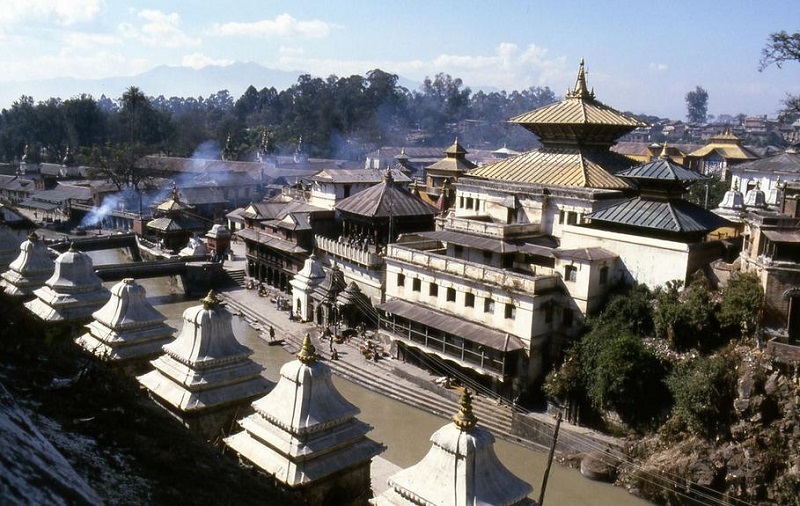
3. Boudhanath Stupa - the Largest Round Stupa in the World
Boudhanath Stupa(Boudha stupa) is located 8 kilometers east of Kathmandu city center. With a huge white dome, the tower is 38 meters high and 100 meters in diameter. Bodhnath is the largest round stupa in the world, and one of the cultural heritage of the Kathmandu Valley. Boudha Stupa is an important holy place for Tibetan Buddhism in Nepal. When believers pray, they must walk in a clockwise direction, turn the prayer wheel, while drawing rosary beads or reciting scriptures. The huge tower base, the majestic golden roof, the five-color prayer flags fluttering in the wind, and the Buddha eyes full of compassion and power have become a major symbol of Nepal.
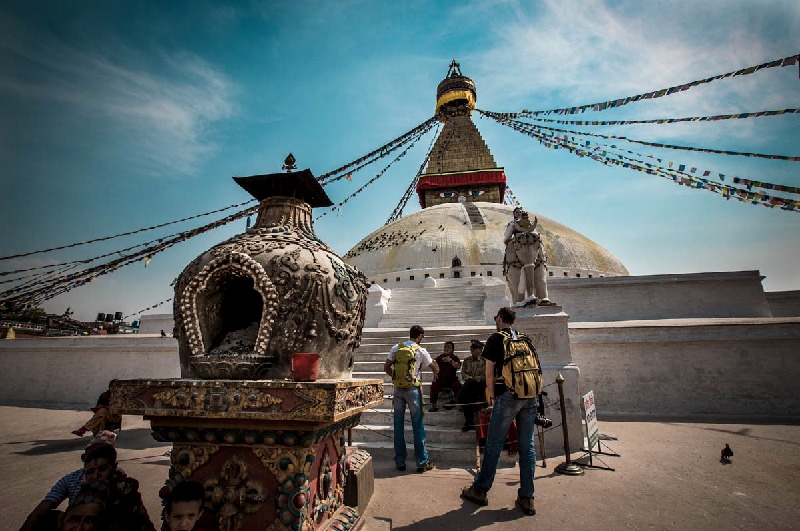
4. Budhanilkantha Temple - a Unique Vishnu Temple
Budhanilkantha Temple is located 9 kilometers north of the Kathmandu Valley. Here is an open Hindu temple dedicated to the god Vishnu. Vishnu is one of the three main gods of Hinduism. This Hindu temple is a famous temple of Nepal for the god Vishnu's statue. The statue is different from all other statues of Vishnu in Hindu temples as it's lying in the water. Legend has it that Vishnu lay asleep on the Ananta Shesha coiled like a bed and floating on the sea of cosmos. Whenever the cycle of the cosmos cycle begins, a lotus flower grows from the belly button of Vishnu, and Brahma is born, and the world begins to be created. At the end of the catastrophe, Shiva destroys the world again. Vishnu falls asleep and awakens repeatedly, and the cosmos continued to circulate and renew.
This 5-meter-long statue is said to have floated from the bottom of the sea. According to research, this statue was chiseled in the 7th or 8th century, more than a thousand years ago. Only Hinduists can touch the feet of God Vishnu lying on the snake "Shesha", but they can also be seen across the railings. It is one of the most beautiful temples in Nepal.
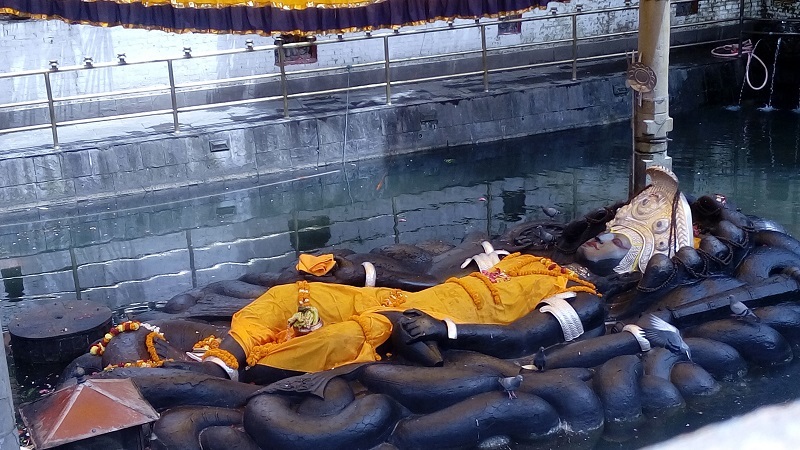
5. Changu Narayan - the Oldest Hindu Temple in Nepal
Changu Narayan is located 4 kilometers north of Bhaktapur and 18 kilometers east of Kathmandu. It is one of Nepal's World Cultural Heritage. This Nepalese temple was built in 323 AD during the reign of the Lichhavi Dynasty. Till the 5th century AD, Changu Narayan was officially completed. With a history of 1600 years, it's recognized as the oldest Hindu temple ever discovered in Nepal. As one of the most important Hindu temples in the Kathmandu Valley, the temple is dedicated to Lord Vishnu in the form of Narayan. The temple has a five-story pedestal and a three-story roof, and the windows are carved with ten incarnations of Shiva. In front of the temple, there is a golden-winged bird with an eagle head and a human body kneeling and pointing at the temple, adding a bit of mystery. The Nepali temple also enshrines the statue of King Bhupatindra and his queen in the Malla Dynasty era. Here you can see various life scenes of local people in Nepal.
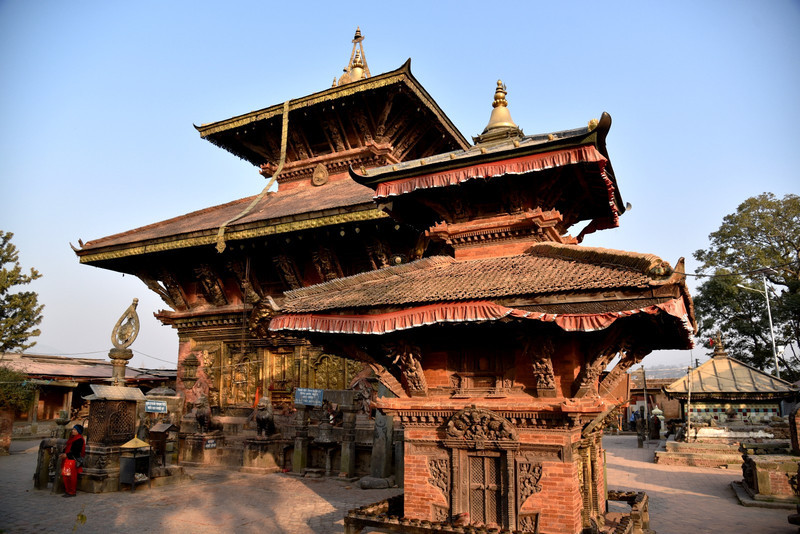
6. Kumari Bahal - Enshrines the Living Nepalese Goddess
Kumari Bahal is also known as Kumari Temple. At the junction of Palace Square and Durbar Square, stands a three-story red brick building. It faces the palace square and is guarded by a stone lion at the door. This goddess temple was built in 1757. The building is a carved wooden building, and the windows on the first and second floors cannot be opened. There is a golden window with a red curtain in the center of the top floor, and the golden throne of the goddess is set in the inner room. Its exquisiteness is comparable to the king's golden lion throne. There are 3 statues of Sakyamuni in the south hall facing the temple gate. Goddess Kumari will appear in the temple at four o’clock every afternoon but the photograph is prohibited. The goddess appears expressionless. If she smiles at you, it will bring bad luck. At Indra Festival every year, Goddess Kumari will sit and place The chariots in the temple cruise around the city, praying for a good harvest.
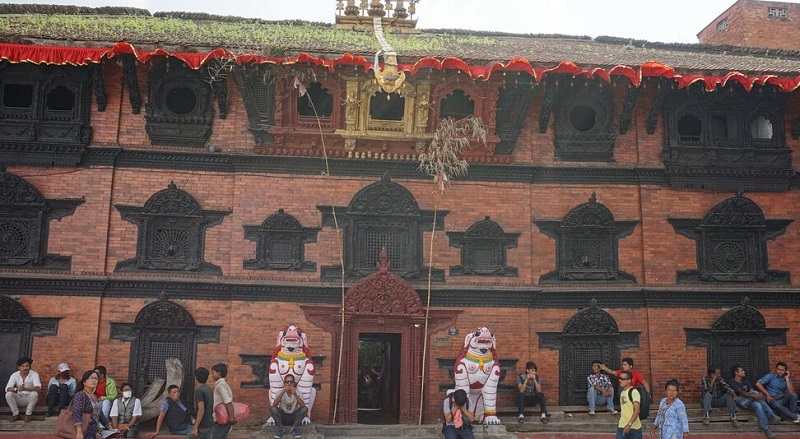
7. Maya Devi Temple - Holy Place of Buddhism
The Maya Devi Temple is located in the very center of the holy Lumbini Garden, built on the birthplace of Buddha Shakyamuni, and has a supreme status. It is one of the most important historical sites in Lumbini and even in Nepal. The four major attractions in Maya Devi Temple are Ashoka Stone Pillar, Holy Water Pond, Bodhi Tree and Maya Devi Temple. What pilgrims value most is a piece of sandstone carved with the birth of the Buddha. Centuries of wind and rain made the sandstone almost flattened, but you can still vaguely discern the pattern of Madame Maya who gave birth to the Buddha under the gaze of Indra and Brahma.
On the east and southeast sides of the temple, there is surrounding ground covered with many brick pagodas and ruins of temples, which can be dated back to the 2nd century BC to the 9th century AD. There are two small Buddhist temples opposite the Maya Temple: the Dharma Swami Maharaj Buddhist temple built by pilgrims from Mustang, Nepal, and the Nepal Buddhist temple built by monks from Bihar, India. An entire holy shrine is actually a group of ancient relics, attracting the worship of pilgrims.
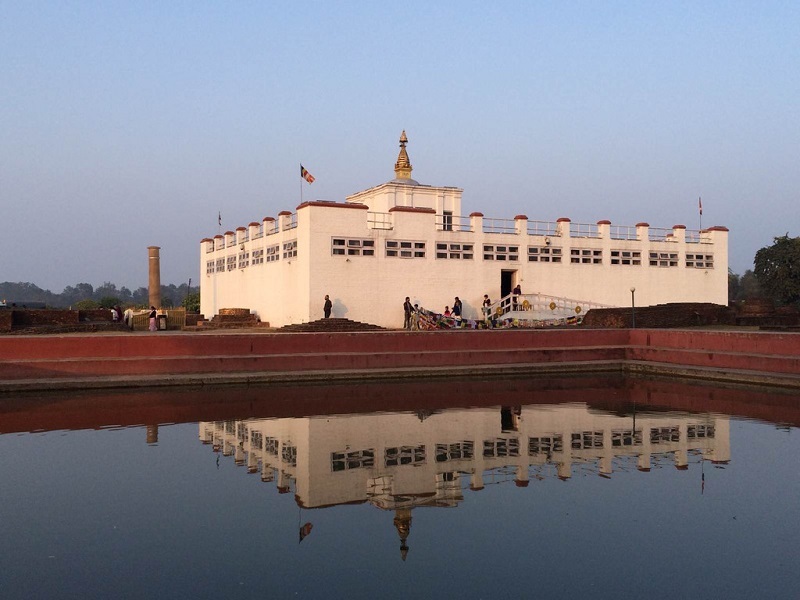
8. Manakamana Temple - Wish Fulfilling Temple
The ancient temple is 106 kilometers away from the "Kathmandu" district. It is located on the ridge of the Gurkha region on the way from Kathmandu to Pokhara, overlooking the Trisuri valley and the Marshyangdi valley. You can take an 8-minute cable car ride or hike up the mountain. There enshrines a Hindu goddess Bagwati (Durga), one of the incarnations of Parvati. She has the power to fulfill wishes. Many newlyweds from Nepal come here to pray that they can have a boy. Only Hindus are allowed to enter this temple.
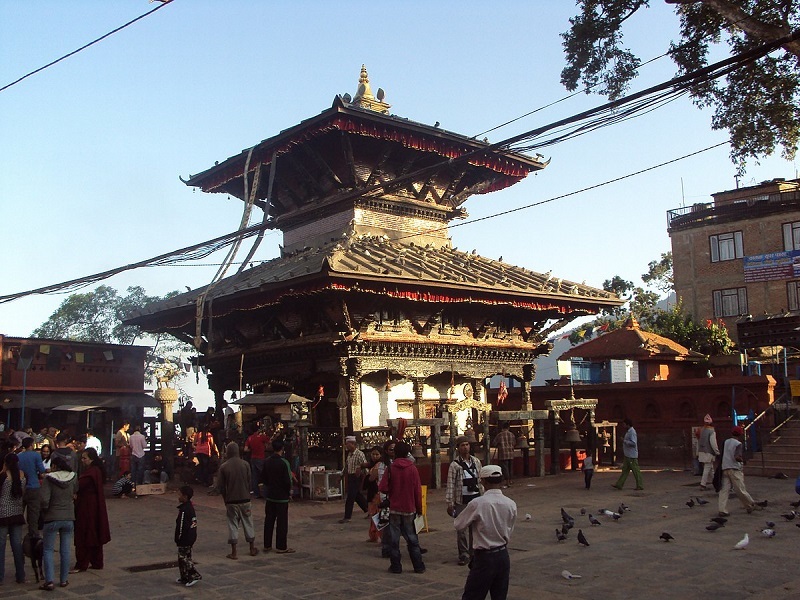
9. Dakshinkali Temple - Hindu Blood Sacrifice Ceremony
Located 20 kilometers south of the Kathmandu downtown, Dakshinkali Temple is one of the oldest temples in Kathmandu hiding in the woods among the mountains. From the outside, it is very quiet and simple. The temple is dedicated to the Goddess Kali, which is the most terrifying incarnation of Devi, the consort of Shiva. Every Saturday and Tuesday, nearby believers come here and slaughter the chickens, ducks, and goats they brought on the spot to worship the goddess Kali, very lively and spectacular.
Every October, during Dashan Festival, Nepal’s biggest festival, every family must slaughter at least one sheep to worship the Kali goddess. At that time, believers in the Kathmandu Valley will come to the temple and soak the statue in blood to satisfy the bloodthirsty of Goddess Kali. It’s a great blood sacrifice ceremony for Hindus. Most parts of the temple can be visited, and non-Hindus cannot enter the main temple dedicated to the goddess Kali.
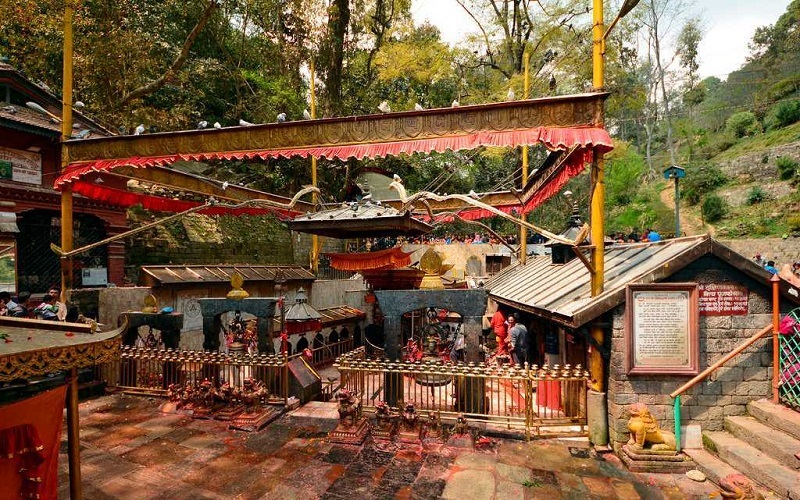
10. Guhyeshwari Temple - Temple of Mother Goddess
It is one of the Shakti Peeths, located about 1 km east of the Pashupati Temple. This temple is related to Goddess Devi Parvati(the wife of Shiva). According to legend, a body part of Sati (a form of Devi) fell to the exact location where the temple is now after her death. Therefore, people think that Guhyeshwari Temple represents the divine feminine power embodied by Devi Parvati. The pagoda-style temple has a unique interior decoration. It is not a standing posture of a goddess, but a flat figure parallel to the ground, worshiped by bending downward. This temple was built by King Pratap Malla in the 17th century. Guhyeshwari is also popular among the Tantrik worshippers. It is believed that those who want to gain strength will go to this temple to worship the mother goddess.
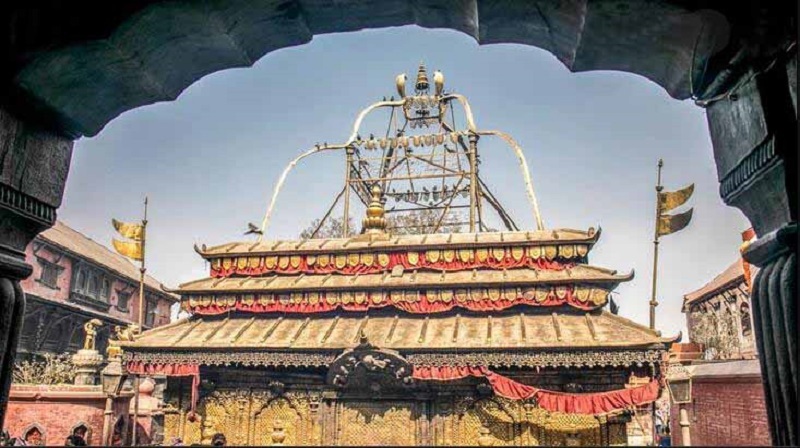
Email response within 0.5~24 hours.


